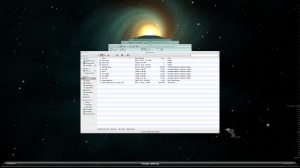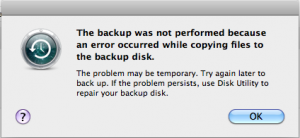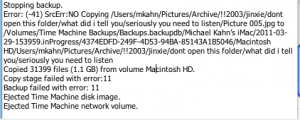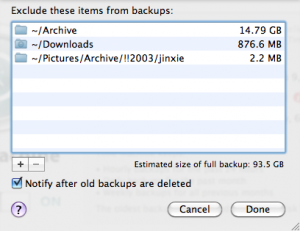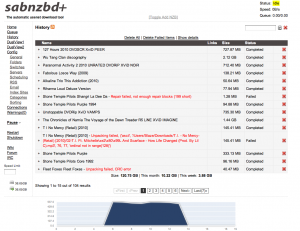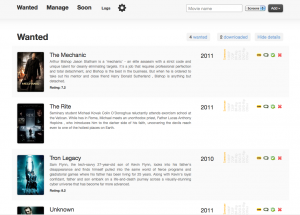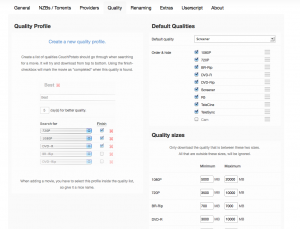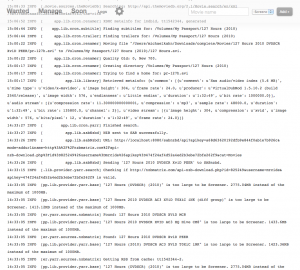To start export an OpenVZ virtual server from the vePortal client portal:
1. Login to the users veportal account with the username and password:
example: http://1.1.1.1:2407/login.php
2. Visit the Backup Functions tab
3. Click New Backup, make sure the Backup limit is not reached under VPS Resource Limits on the left hand information pane.
4. Wait until backup completes (this may take awhile)
5. Click Download Backups in the Backup Functions Tab
6. Now you should have a tar.gz file for the VPS backup. This is the data you will be migrating. You’ll need to FTP this somewhere soon.
Important: Take note of the OS and arch of the VM you have just exported. You’ll need to create the same container in your SolusVM master.
To import (create db entries in solusvm) a OpenVZ virtual server from the admincp do the following. (Ref: http://docs.solusvm.com/importing_virtual_servers?s[]=import&s[]=openvz)
7. First enable Import Mode from the admincp go to Configuration » Settings » Other and tick Import Mode ON . Click Update.
8. Select Virtual Servers » Add Virtual Server
9. Select OpenVZ
10. Select the Node & Plan then click Continue
11. Enter the container id of the virtual server you want to import (as show under vzlist -a on the host node) in the Container ID field. Also go back to Virtual Servers -> List Virtual Servers and pick the next highest number in the VMID. If the greatest take number of an active VPS is 118, you will use 119.
12. Fill in the rest of the fields, select the client, give it a hostname, and choose the OS and Architecture of the VM that you exported (important to match the same arch and close version).
13. Click the Create Virtual Server button
14. Save the virtual server details, click continue.
15. Now if you are only importing this VPS, DISABLE Import Mode from the admincp go to Configuration » Settings » Other and tick Import Mode OFF .
Now you have the shell of the VM and its created in SolusVM! Half way there. Time to move your data over.
Move and prepare your data
16. Take your tar.gz from the export and FTP it somewhere secure.
17. If the file has a ‘-‘ before the filename, remove that dash. Linux doesn’t particularly like files that start with a -.
Ex: -backups-3005136-veportal_3005136_06-26-14_75f32b95cc_vesave.tar.gz
18. SSH to the SolusVM slave where you setup this VPS in step 10.
19. Change directory to /vz/private
Note, there is no directory for the VPS you just created in SolusVM
[code lang=”bash”]
[root@reek ~]# cd /vz/private/
[root@reek private]# ls
113 117 118
[root@reek private]#
[/code]
20. So lets create the folder for the VPS we are migrating.
[code lang=”bash”]
[root@reek private]# mkdir 119
[root@reek private]# ls -al
total 24
drwx——. 6 root root 4096 Jun 26 20:10 .
drwxr-xr-x. 9 root root 4096 Jun 16 23:24 ..
drwxr-xr-x 23 root root 4096 Jun 26 02:04 113
drwxr-xr-x 20 root solusvm 4096 Jun 25 10:44 117
drwxr-xr-x 21 root root 4096 Jun 25 11:05 118
drwxr-xr-x 2 root root 4096 Jun 26 20:10 119
[/code]
21. Make sure perms and ownership are OK
22. Change to the directory you just created and wget the tar.gz that you uploaded in step 16
[code lang=”bash”]
[root@reek private]# cd 119
[root@reek 119]# ls
[root@reek 119]# pwd
/vz/private/119
[root@reek 119]# wget source.com/backups-3005136-veportal_3005136_06-26-14_75f32b95cc_vesave.tar.gz[/code]
Again, make sure you removed the – in the front of the filename. You can do this now on the destination server if you want too.
[code lang=”bash”]
[root@reek 119]# ls
backups-3005136-veportal_3005136_06-26-14_75f32b95cc_vesave.tar.gz
[/code]
23. I ran into some errors when trying to untar the tar.gz, so follow these commands:
[code lang=”bash”]
[root@reek 119]# gunzip backups-3005136-veportal_3005136_06-26-14_75f32b95cc_vesave.tar.gz
gzip: backups-3005136-veportal_3005136_06-26-14_75f32b95cc_vesave.tar.gz: decompression OK, trailing garbage ignored
[root@reek 119]# tar xf backups-3005136-veportal_3005136_06-26-14_75f32b95cc_vesave.tar
[root@reek 119]#
[/code]
24. Okay, so note the VMID of the export and the new VPS are different in this case (3005136 and 119). So we need to manually move files after they have been uncompressed.[code lang=”bash”]
[root@reek 119]# ls
backups-3005136-veportal_3005136_06-26-14_75f32b95cc_vesave.tar etc vz
[root@reek 119]#
[/code]
25. Drill down in the uncompressed files (/vz/private/YOUROLDVEID)
[code lang=”bash”]
[root@reek 3005136]# pwd
/vz/private/119/vz/private/3005136
[root@reek 3005136]# ls
aquota.group aquota.user bin boot dev etc home lib lib64 media mnt opt proc root sbin selinux srv sys tmp usr var
[root@reek 3005136]#
[/code] Here we have found what we are looking for! Our VMs data.
26. You want to move all of these files to the /vz/private/NEWVEID directory. In our case /vz/private/119/
27. So move those..
[code lang=”bash”]
[root@reek 3005136]# mv * /vz/private/119/
mv: overwrite `/vz/private/119/etc’? y
mv: cannot move `etc’ to `/vz/private/119/etc’: Directory not empty
[root@reek 3005136]# ls
etc
[root@reek 3005136]#
[/code] It gave me an error because there was already an etc/ in the /vz/private/119 dir. So remove that old etc and put the one from the decompressed file. Make sure files in both seems fine before removing and moving…
28.
[code lang=”bash”]
[root@reek 3005136]# rm -rf /vz/private/119/etc/
[root@reek 3005136]# ls
etc
[root@reek 3005136]# mv etc/ /vz/private/119/
[root@reek 3005136]#
[/code]
29. Now we are in business and almost done. Drill down into our target directory (/vz/private/119). Make sure everything looks good. Compare dirs with other VMs you have that are working if you need a sanity check.
[code lang=”bash”]
[root@reek 3005136]# ls
[root@reek 3005136]# cd ..
[root@reek private]# cd ..
[root@reek vz]# cd ..
[root@reek 119]# ls
aquota.group aquota.user backups-3005136-veportal_3005136_06-26-14_75f32b95cc_vesave.tar bin boot dev etc home lib lib64 media mnt opt proc root sbin selinux srv sys tmp usr var vz
[root@reek 119]#
[root@reek 119]# pwd
/vz/private/119
[/code]
30. Remove the vz folder, we don’t need that anymore.
[code lang=”bash”]
[root@reek 119]# rm -rf vz/
[/code]
31. Almost there. Try and start your new VPS.
[code lang=”bash”]
[root@reek 119]# vzctl start 119
Container config file does not exist
[root@reek 119]#
[/code]
Create the VMs config file
32. It wont start without a config file! You’ll need to make one. Its easy, lets do it now.
[code lang=”bash”]
[root@reek 119]# cd /etc/vz/conf/
[root@reek conf]# ls
0.conf 102.conf.destroyed 104.conf.destroyed 106.conf.destroyed 108.conf.destroyed 110.conf.destroyed 112.conf.destroyed 114.conf.destroyed 116.conf.destroyed 118.conf 120.conf.destroyed ve-105.conf-sample ve-107.conf-sample ve-basic.conf-sample ve-vswap-1024m.conf-sample ve-vswap-256m.conf-sample ve-vswap-4g.conf-sample ve-vswap-solus.conf-sample 101.conf.destroyed 103.conf.destroyed 105.conf.destroyed 107.conf.destroyed 109.conf.destroyed 111.conf.destroyed 113.conf 115.conf.destroyed 117.conf 119.conf.destroyed 121.conf.destroyed ve-106.conf-sample ve-108.conf-sample ve-light.conf-sample ve-vswap-1g.conf-sample ve-vswap-2g.conf-sample ve-vswap-512m.conf-sample
[root@reek conf]#
[/code]
33. Copy a config file of an existing running VPS. I’ll use 118.
[code lang=”bash”]
[root@reek conf]# cp 118.conf 119.conf
[/code]
34. Edit that config file. You’ll need to update just a few fields towards the bottom. OS template, IP, and Hostname. Make sure these match with the data you gave SolusVM when you created the VM (Hostname, IP) and from the export (OS+arch).
[code lang=”bash”]
[root@reek conf]# vi 119.conf
OSTEMPLATE=”centos-6.5-x86_64″
ORIGIN_SAMPLE=”vswap-solus”
IP_ADDRESS=”5.254.114.190″
HOSTNAME=”wiki.import2.source.com”
[/code]
35. Try and start your VPS it should come right up
[code lang=”bash”]
[root@reek conf]# vzctl start 119
Starting container…
stat(/vz/root/119): No such file or directory
stat(/vz/root/119): No such file or directory
stat(/vz/root/119): No such file or directory
Initializing quota …
Container is mounted
Adding IP address(es): 5.254.114.190
Setting CPU limit: 400
Setting CPU units: 1000
Setting CPUs: 4
Container start in progress…
[root@reek conf]# vzlist -a
CTID NPROC STATUS IP_ADDR HOSTNAME
113 79 running 5.254.114.1XX server.xxxxxxxx.com
117 16 running 5.254.114.1XX xxxxxxx.com
118 86 running 5.254.114.2XX xxxx.xxxxxx.com
119 19 running 5.254.114.190 wiki.import2.source.com
[root@reek conf]#
[/code]
36. Check in the SolusVM master your VM should be green and running fine.
Don’t forget to remove the backup file that you used.
Comment on this post if I missed anything or if you are having any issues:).

